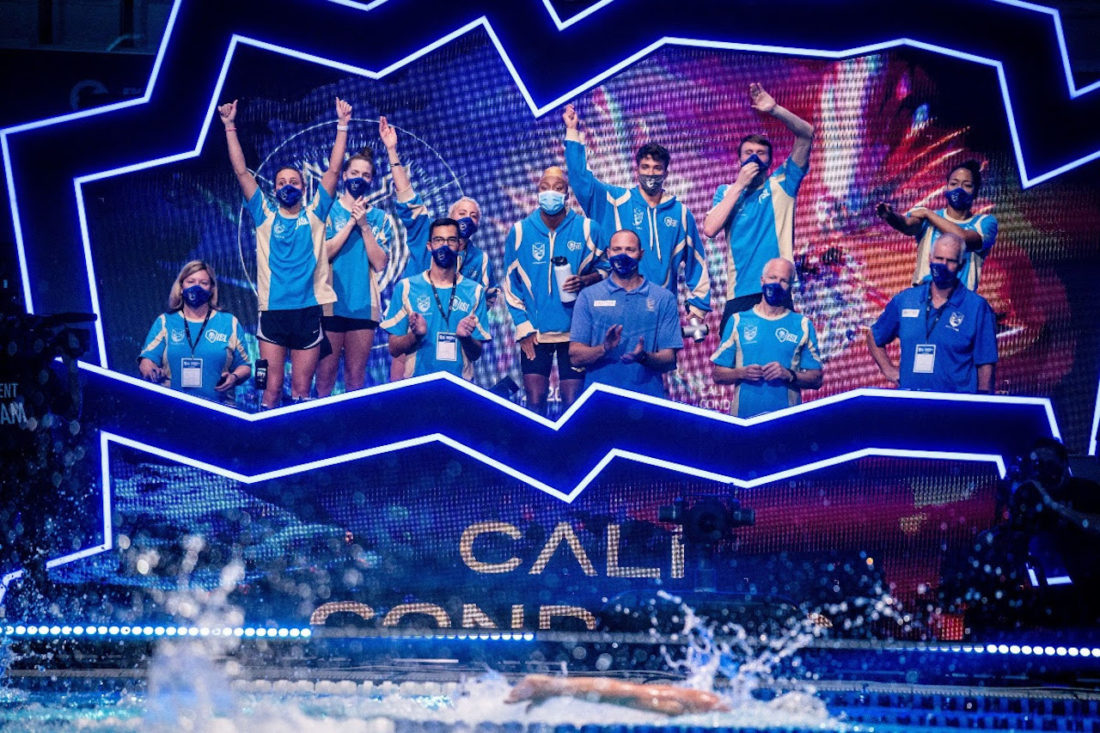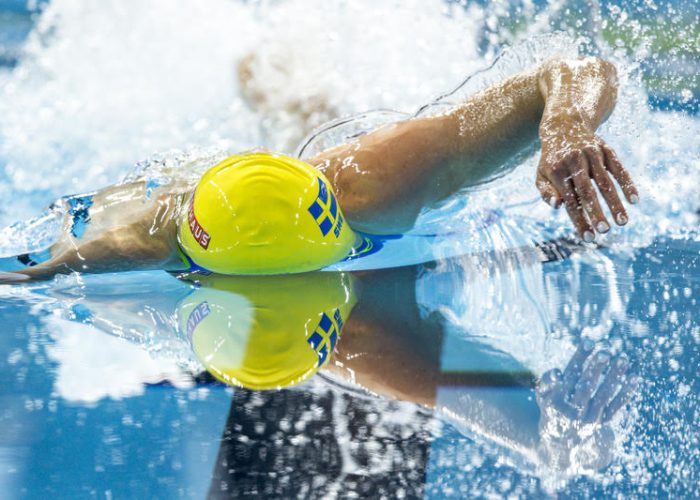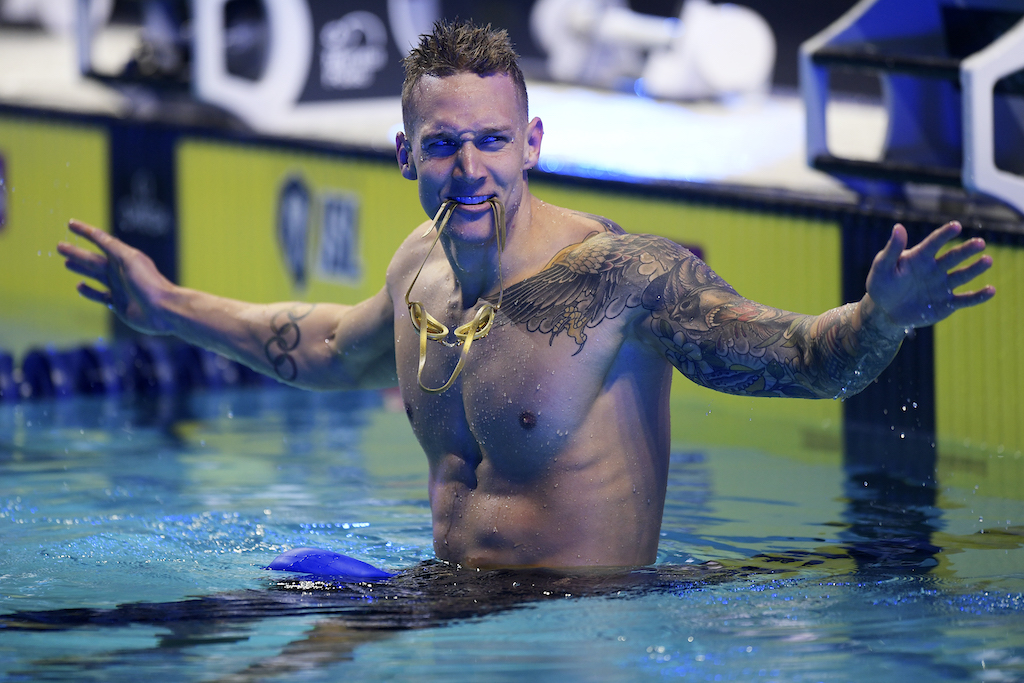The ISL Draft: Stuttering First Steps, Or A Sign Of Deeper Problems? A Fan’s Perspective, Followed By An Editorial Note Of Caution

The International Swimming League Draft – what is it all about and is it going to help popularise swimming or will the process and a complex system of points and merit badges make the pool feel even more remote from a potential audience that remains so elusive to a sport perceived yet as a once-every-four-years Olympic thriller with a long hibernation period?
Propulsion Swimming is run by swim fans Scott and Dan, whose mission if to help ‘grow swimming’ and spread the word that swimming is not only a once-every-four-years sport. They are fans of the ISL and supporters of its different take on how swimming can be presented to a wider audience. Here, Scott pens a guest commentary on their concerns over the ISL Draft and the complexities being built into the League and ask whether such things are a barrier to the wider audience the sport needs for growth after decades of championship-format stagnation. And then some thoughts from me, Craig Lord.
Fan Take: Guest Commentary by Scott at Propulsion Swimming
Every part of me wishes that this was a positive spin on how ISL has once again revolutionised the way we consider swimming. In a way, the League’s latest move has done just that: the introduction of a drafting system is the first of its kind in the sport and as an avid fan of the American sports system I can definitely see the benefits of creating a level playing field and a calendar event that is separate from racing itself.
That said, it’s hard to comprehend just how far they have missed the mark.
For sports fans, a draft, in essence, is a chance for revival and renewed optimism: your team, no matter how weak they might have been the year before, is about to get exciting new talent onto its roster. No restriction. No conditions. You are getting something different from the previous year, guaranteed. Fresh hope effortlessly achieved.
Beside the chance to level the playing field and the drama of new swimmers joining the league, the reason I was so excited about the draft is that it was a massive chance for swimming to further change its narrative of being just a once-every-four-years sport. The League is creating the first steps of a professional league by building a narrative away from the pool. Sports such as the NFL use the off-season; including draft and free agency; as a period of time to build excitement for the coming season, making it a 365-day-a-year sporting experience.

This was the chance for ISL to grow not only its audience, but swimming as a whole; get people excited about a team or even a swimmer they like to follow. Unfortunately, there is a danger that the opposite effect has been achieved. Rather than growing the fan base, the experience of the past week looks likely to have shrunk it.
Image courtesy of the ISL
More complex rules and ill-conceived explanations leave the casual viewer lost. Heck, I’m a die-hard swimming and drafting fan and even I’ve had to ignore the wording and create my own so I can follow it all with any sort of investment.
Take the first two rounds of the ‘draft’; where 15 swimmers are retained by their original teams over the last two seasons. The drawn out nature of what is not, by definition, a draft, dampened anticipation and excitement. If that part of the process had been skipped altogether and we had been given a retained list from each team, I don’t think anyone would blink. Common day in most sports.
Then there are nuances written into the rules that just don’t need explaining in press releases. Yes, they can be written into the rules if you are set on having them but you’re trying to market an exciting spectacle not a rulebook.
And don’t get me started on the new badges awarded to swimmers.
Towards the end of the draft, we got a glimpse of why I had such high hopes and how it could add to the interest of the ISL, at least for fans. Draft picks announced every 60 seconds, no time for any complexity this time, but even the best moments could do little to shake off the feeling of a spurned opportunity.
Of course, the teething problems of the draft and other issues that fans have been debating shouldn’t detract from the impact the ISL has had and is having on the sport: the League has by far the most exciting swimming format out there. Come August, when racing begins again, much of this may all be long forgotten and, like many other fans, I will remain firmly behind the ISL movement, supporting it anyway I can. Extra income and exposure for professional swimming is long overdue.
However, questions abound, such as: can lessons be learnt from the past week’s drafting experience, does it expose a more systematic flaw within the ISL set up, is it time that this swimming revolution looked for help outside of its circles and ditched the complexities and returned to its simple duel in the pool roots?
Editorial, S.O.S – Craig Lord: Draft this – Keep. It. Simple.
The voice of fans is critical, along with others, to the development of the ISL. Scott raises some important issues in his commentary above.
Let’s face it, if a swim fan and a keen sports draft enthusiast is left non-plussed and underwhelmed by a new concept in the sport designed to raise interest, there is not much hope of growing a wider audience and reaching for what has long eluded swimming: the ability of the sport to persuade ‘outsiders’ to step through the door and feel like ‘insiders’ straight away.
Fast, tight, thrilling racing does that – and as Scott notes, much may be forgiven and forgotten by the time the swimmers take to their blocks for ISL Season 3. However, if you overlay the simplicity of racing, of a straightforward Pro-Team points with a veneer of contrived Saturday-night TV game-showmanship, you run the risk of downgrading swimming even for swimming fans.
I find it odd that some of those involved in forming and then publicising lengthy and complex rules are among people telling journalists these days that if you can’t tell it in 200-300 words, you’ve lost your reader (I beg to differ but that does require understanding that readers have brains, too).
The ISL draft rules alone run to almost 3,000 words. I would go further than Scott and suggest that if you need 3,000 words to describe a process intended to make the sport more exciting, you’ve gone way too far. Explain the draft to me in 60 seconds or less and you have a chance of ticking the box.
Make it 30sec or less for most of the rest of the mainstream written media – the press, a body of professionals that has been made to feel as though it is somewhat surplus to requirement in the first two seasons of the League. That’s a shame, not least of all because the vast bulk of those people and their news organisations need swimming less than swimming needs them.
Failing to engage with mainstream media and listening to what their needs might be to ensure better coverage of swimming is not something I would associate with standard models of Pro-sports development: even at a time of direct digital access to fans via social media, the mainstream written media is a constant presence in big Pro-sport. Wimbledon is on right now. Vast written media service, complete with almost instant transcriptions of myriad press conferences with athletes every day. They do it extremely well. They offered to host a visit from FINA folk when I asked if it might be possible more than 20 years ago. FINA didn’t think it worth it. They knew better. The ISL might want to ask if they might pop along for a look: they could learn a lot.
So far, the mainstream media has shown little interest in the League beyond a modest focus on two key storylines: what’s it all about and why is a billionaire investing in swimming; and ‘swimmers turning Pro and carving out a career for themselves’.
Both those storylines will run their course. Then what? What about the swimming, the actual racing? If the draft and badges and the complexities of awarding points for those leading at the half-way stage of a medley race were designed to grow the sport, to attract greater media in between those moments when the broadcasters, quite frankly, tune out altogether, and mainstream media is fairly key to building a continuous narrative, then the ISL needs to be asking itself ‘where have we gone wrong’?
The answer: it seems you forgot Rule No 1 of every major sport in the world. Keep. It. Simple.
By simple, I mean this, no matter how long the activity is, from 10sec race to 4-hour tennis epic: ball in net or basket, 1-0 (instant result understood); hand on wall (instant) foot over line (instant); foot over line before ball (instant); ball in, ball out (instant)… etc etc etc.
Scott repeats a reference I made in response to one of his tweets of concern over the draft:
The ISL could have learned from the Duel in the Pool when it came to simplicity. Each swimmer was up to score points for their team; the points accumulated and by the time the closing relays came along, there might be (it was the case on several occasions down the years) a cliff-hanger to bring the whole thing to a thrilling climax. It was easy, it was great fun. It stood in stark contrast to the formality of the full championship format, with heats, finals and all the rest of it, sometimes all squeezed into two days, as we saw at World Cups on the way to the demise of a series with huge potential that turned into a massive, wasted opportunity because of a lack of vision and a lack of listening at FINA.

The ISL has been the go-to alternative. The money, the backing, the establishing of formats, rules, principles, the backing of swimmers, the engagement of coaches and federations, the light show and branding, the solidarity season during the pandemic, have all evolved rapidly to provide a lifeline to a sport that has been struggling, whether it sees it or not, to adapt to the current century and challenges that have only just begun.
Now, as Season 3 looms, the League runs the risk of over-thinking its concept, over-complicating the mechanics with a rule book that feels like a degree course you’d rather not take.
Among reasons why U.S. Pro sports, hugely popular and lucrative in the United States, don’t sell nearly as well as other sports in Europe, is heritage and the knowledge that comes with that and, in the absence of such things, this reference among many similar ones to be found in a variety off wordings on sports analysis websites: “The league matches that are held in Europe and America differ in the way they are organised, advertised and broadcasted. In European sports, especially football, the formats followed in the leagues are quite straightforward in nature.”
Keep. It. Simple. Swimming is way too far back down the ladder of big world sports to be able to afford to alienate a single potential fan.
I recall sitting next to an American journalist from the Pro-sports beat at the Olympic Games some years ago. I helped him fathom what was going on in the pool for several days and then found myself at the baseball for Cuba (pro-team in the guise of amateurs) Vs USA (in those days an all-amateur team). Much was lost in translation and, it seemed, I wasn’t alone: after my 20th question in half an hour, the American journalist laughed and said: “Jeez, you’re like my wife with all these questions”. Baseball is a tradition in some countries, the U.S. and Japan, for example. They get it, from knee high. Cricket in the Commonwealth: same thing. But if you want to be a truly global game, like football/soccer, like tennis, golf etc etc, you’d better make your sport almost instantly accessible to that wider crowd.
Swimming has the ability to be such a sport – and it is not just the “Olympics” tag that makes the sport so popular every four years: swimming is easy to follow, even if you don’t quite know what 56.88sec over 100m breaststroke actually means (and what it means is actually quite simple to describe in a variety of ways to the lay reader if the journalist gives it some thought).
Swimming is not a sport likely to sell on the basis of complex ways of assessing MPVs, of points systems that rely on where folk are after the backstroke turn in a medley race.
The fans to one side, the media to the other, the potential audience in the mix but the circle in which the ISL, among other swimming event organisers, are the centre-point, is squared by a fourth, hugely important, element: big sponsors.
Go to Wimbledon, see what happens. It’s a family day out, something for the nerd, the fan, the geek, the folk just out to have a lovely day, a glass of Pimm’s and a punnet of strawberries and cream. The broadcasters are there in numbers, as are the written press that keeps the narrative going in the gaps between the live action, with live reports, analysis and profiles on the players, some of that going deeper and wider than TV ever travels, barring the in-depth documentary.
The whole thing is easy viewing, easy experience for the visitor who leaves calling themselves a fan (stats show than many of them go out and buy a racket, new tennis outfit and so forth, too … the boost to the tennis industry is seasonal; there is no real equivalent in swimming for the big brands that work in and support the sport).
In the midst of it all you, the visitor, can be anything you want to be, from world expert to ‘just in it for the Pimm’s’ – but whoever you are, you’ll feel like an insider, welcome, not alien, and you’ll know that there’s one thing you don’t need to be: a calculator in constant flow during the action just to keep up with the concept of who might be winning and why.

Brands such as Land Rover, Mercedes, big utility companies, from water to energy, don’t want to attach their names to rulebooks and tortuous points systems. They want great sport, wins and losses you can spot from a mile away on a foggy day; they want role models, supreme athletes (swimming is awash with those), easy access entertainment, lifestyle and all of that in a package and backed by numbers that swimming simply does not boast unless for that one moment every four years, when most athletes and their backers have no chance of using the moment as a commercial opportunity just as the big wide world finally tunes in.
In that sense, God bless the ISL. It knows what swimming needs. It has now also embraced a few things swimming does not need. And that matters.
Across Europe during Uefa 2020 in 2021, giant screens beam out adverts that include sales pitches for bottled water using fabulous aquatic themes played out by … footballers. Why has no water company ever considered a global campaign through swimmers and swimming?
Accessibility is among key answers. If the swimming fan feels lost, if the swimming expert senses a rule book filling up with complexities and the need for calculators on deadline at a time when the Olympic swim story is the only one capable of making mainstream coverage, then forget growing the audience.
The ISL has a chance to make up for decades of FINA stagnation and a failure to listen to major stakeholders, including fans, media and sponsors. Right now, it feels as though the League is heading down a similar road of thinking it knows best, talking to itself in a niche world seemingly passionate about remaining niche, preferring not to heed the voices of some of its biggest supporters.
Konstantin Grigorishin has delivered a gift of enormous potential to the sport. Let it not be ruined by tunnel vision and season after season of changes and new rules that add layers of complexity to swimming that will guarantee the door to the pool remains shut to ‘outsiders’ swimming needs to convert to ‘insiders’.